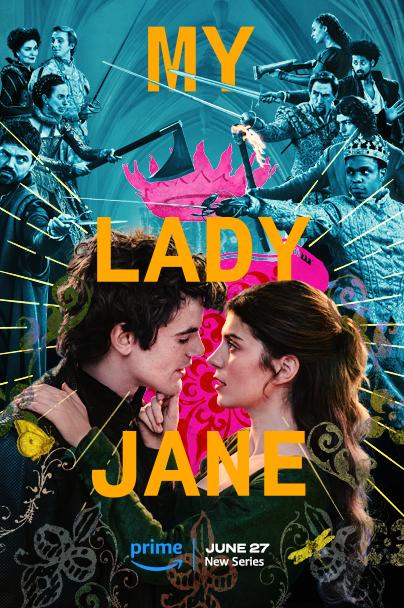Nowadays, book-to-screen adaptations have become a norm for streaming services to increase their popularity among the masses. Amazon Prime’s “My Lady Jane,” an adaptation of the 2016 historical fantasy novel of the same name written by Cynthia Hand, Brodi Ashton and Jodi Meadows, is a great example of this. The novel and the show both follow Lady Jane Grey (Emily Bader), as she becomes accustomed to newlywed life alongside her husband, Lord Guildford Dudley (Edward Bluemel) and the days leading up to her being named Queen of England after King Edward VI’s (Jordan Peters) death.
The show subverts the trope of “damsel in distress” and chooses to remember aspects of Jane that history fails to remember. Bader focuses much of her portrayal of Jane on her intelligence and bravery, as it is noted by history itself that Jane was among the few young ladies of her time to receive a well-rounded education — something that is often pointed out by several characters throughout the show.
Much of the plot centers around the combined chaos of Tudor England and everyday life occurring within the show’s world, as Jane and Guildford find themselves caught in the middle of the conflict between Verities — ordinary humans and Ethians — humans who can transform into animals at will, but are hunted down and have been driven out from society. The show reimagines not only the madness that was occurring during Jane’s reign, but the tensions that existed between Catholics and Protestants at the time, which affected how the royal line of succession went — ultimately leading to Jane’s ascension of the throne. The conflict between the Ethians and the Verities is a driving force behind the decisions that Jane and Guildford make. Guildford himself is an Ethian, as he can transform from human to a horse, but not at will. Guildford’s struggle with his Ethianism ultimately brings Jane and Guildford together, as they are forced to adapt to their new realities at Tudor court.
What made “My Lady Jane” rise in popularity, is that it did not take itself seriously in the same way that many historical fantasy shows such as “Outlander” or “Merlin” tend to do. The show finds humor in the situations that characters encounter creating a comedic undertone. Although the characters speak formally, the way they act is enough to make even the most stoic of people laugh. Apart from the show’s humor, the romance is another point of interest. The chemistry between the main characters is what can make or break a show. Bader and Bluemel provide the audience with the constant tension that comes with the combined forces of the “enemies to lovers” and “will they/won’t they” tropes that make up their love story. While Bader and Bluemel bring the romantic chemistry to the screen, their fellow castmates such as Henry Ashton who plays Guildford’s brother, Lord Stan Dudley, Anna Chancellor who plays Jane’s mother, Lady Frances Grey, and Jane’s youngest sister played by Robyn Betteridge, are some of the standout comedic performances, as they often serve as agents of chaos in contrast to the more rule-following characters.
While the show can be classified with other historical romance shows such as “Bridgerton,” it is unique in the sense that it doesn’t force itself to follow the same rules and structures that many have fallen victim to. It brings something different to the table with its combination of fantasy, romance and comedy while still maintaining the romantic illusion that historical romance shows are known for. “My Lady Jane” brought the life and history of one of the shortest reigning monarchs in English history all while remembering Lady Jane Grey for the life she lived before and during her short reign and not just remembering her unjust death.



